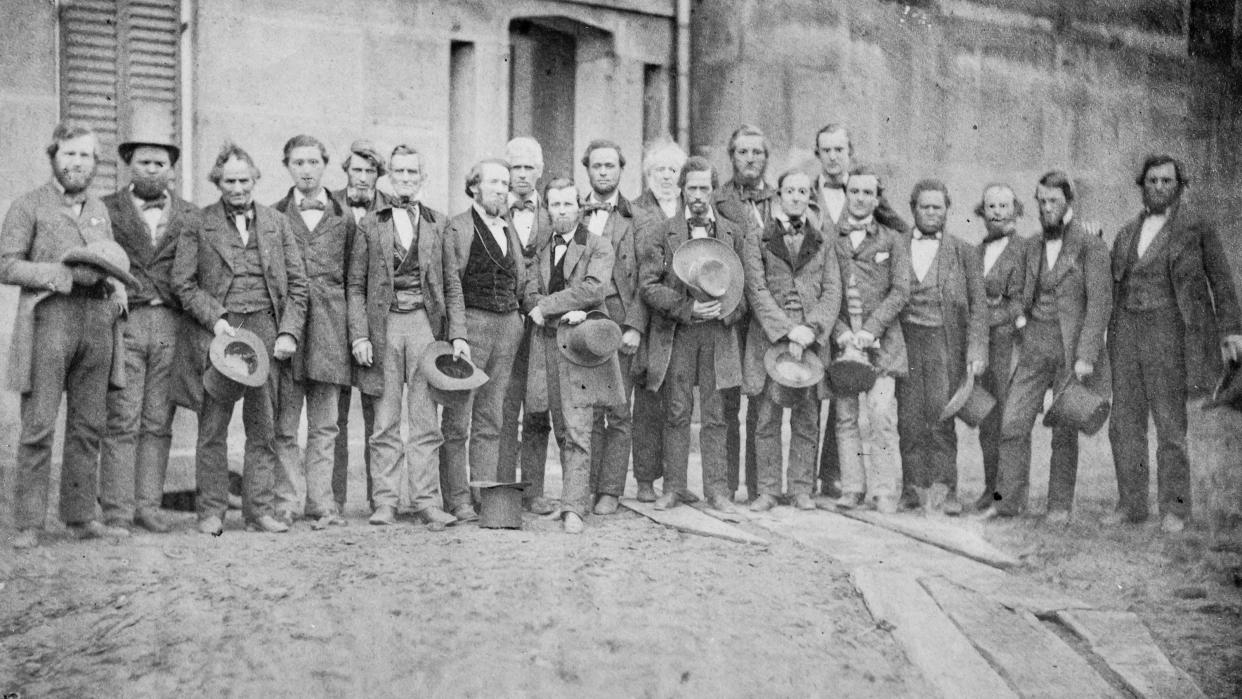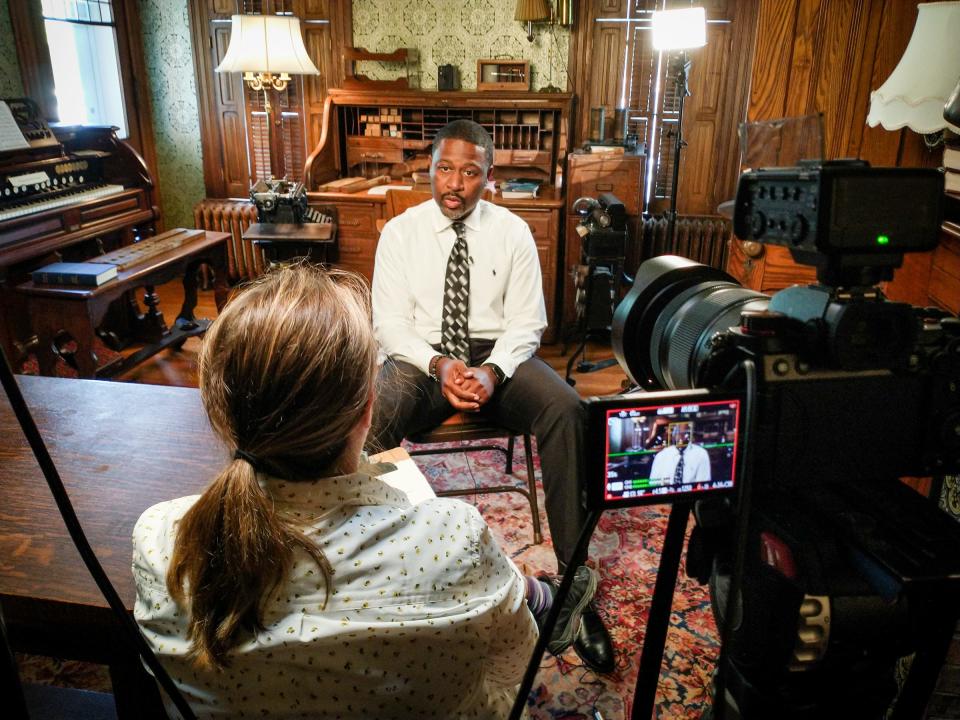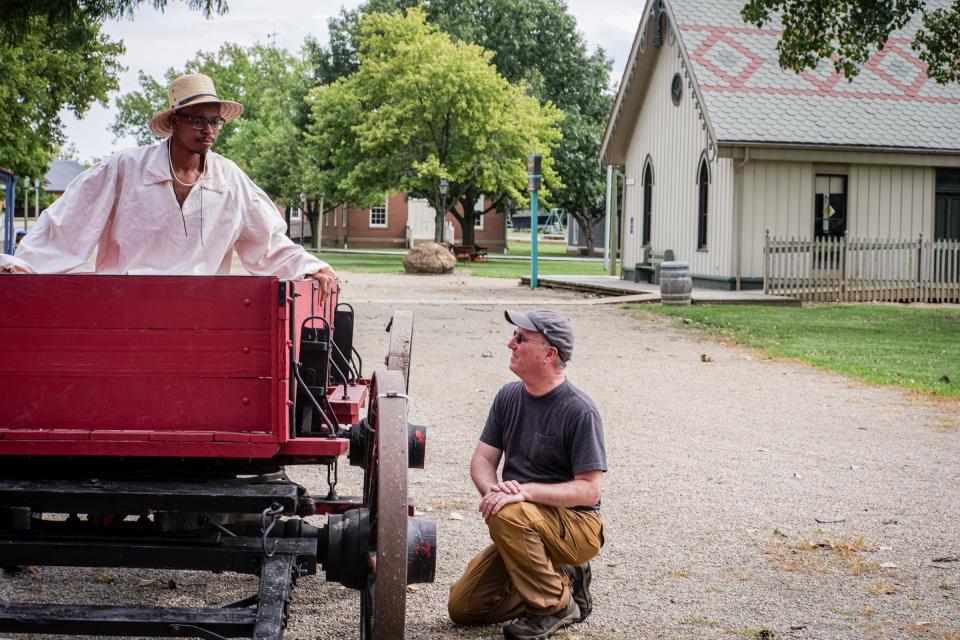New documentary details how Ohioans rescued a formerly enslaved man from Kentucky in 1858

One hundred and sixty-five years ago — and about three years before the start of the Civil War — a pair of small Ohio towns were center stage in the abolitionist movement.
In September 1858, an escaped enslaved man from Kentucky, who had sought refuge in Ohio years before, was put under arrest under the terms of the Fugitive Slave Law of 1850, which mandated that those in free states — such as Ohio — provide assistance to those seeking the capture of escaped enslaved people.
However, in the case of the escaped enslaved man, John Price, a group of Ohioans stood up to the law. After Price was captured and transported from Oberlin to Wellington, a group of abolitionist citizens managed to wrest him from his captors, so he could make his way to Canada to live as a free man.
These events are the subject of a new locally produced documentary, “A Higher Law: The Oberlin-Wellington Rescue of 1858.”
The title refers to the “higher law” defense of 37 of the people who helped Price; they were indicted for violating the Fugitive Slave Law, but remained true to their own sense of right and wrong.
The 86-minute documentary was produced by Columbus filmmakers Christina Paolucci and Scott Spears, who will introduce a screening at 1 p.m. on Saturday at the Ohio History Center.
Paolucci and Spears, who are married and frequently collaborate on documentary films, recently spoke with the Dispatch about the history and ongoing relevance of the events in Oberlin and Wellington over a century-and-a-half ago.
Film: Screenwriting duo behind Pixar film 'Elemental' have Columbus connection

Why did the filmmakers decide to make the documentary?
The seed for the film was planted by Spears’ first wife, now deceased, who had family in Oberlin.
“I had been hearing this story for 30 years,” Spears said. “At one point, about five years ago, I go, ‘Someone should make a documentary about that.’ Then, about three-and-a-half years ago, ‘Wait a minute, I make documentaries — why not me?’”
How is Price’s story told in the film?
The documentary makes use of both talking-head interviews and staged recreations using actors and cinematic techniques.
Who is interviewed in the documentary?
Some 14 scholars and historians were interviewed for the documentary.
“Most of (the scholars) were from Oberlin and knew the subject,” Paolucci said. “If they were a minister, we would talk about the religious component of the story. ... Steve Lubet is a legal scholar from Chicago, who has written books about this as well, so he could explain the legal scholarship.”
What about the staged recreations?
Since no photographs exist of Price, the filmmakers helped bring him alive by filming scenes with an actor playing him, Jabari Johnson.
Other people who figured prominently in the events were also portrayed by actors in scenes filmed in Ohio, Kentucky and West Virginia; some were the actual locations where the events took place, while others — such as the Ohio Statehouse and the Ohio Village living history museum — stood in for the actual places.
“They talk about Oberlin being a bustling city in the early days,” Spears said. “We ended up using (Ohio Village) as a double for Oberlin and the hotel where (Price) is rescued from.”

How did the filmmakers raise the money to make the film?
The budget of over $40,000 was raised in large part thanks to grants from such organizations as Ohio Humanities, the Ohio History Fund and the Greater Columbus Arts Council. Additional money was raised via GoFundMe.
Film: Local theater to show movie directed by former Columbus resident Ryan Stevens Harris
Why did citizens in Oberlin help Price?
“Oberlin was an abolitionist community who said, ‘We will not defend this Fugitive Slave Law,’” said Paolucci, whose film dives into why the abolitionist movement took root in Oberlin.
“They rallied and said, ‘We’re not going to ever let this happen; we’re not going to abide by this law,’” she said.
Added Spears: “Oberlin was founded as a utopian, Christian town, so they lived by that. They said, ‘All men are created equal and seen equal in the eyes of God,’ so the law of God supersedes the laws of men to own people.”
What happened to Price?
No one knows what happened to Price after he made his way to Canada, the filmmakers said.
“We can’t even confirm that Price was his last name,” Paolucci said. “It was probably a name he just took, and by the time he got to Canada, he would have changed his name again.”
What happened to the Ohioans who helped Price?
“Thirty-seven of the rescuers ended up being arrested for violating the (Fugitive Slave Law),” Spears said. “There was a big trial, and ultimately a couple were convicted, but then there were (legal) technicalities that freed the rest of them.”
What can contemporary audiences take from the story?
The filmmakers see contemporary parallels to the saga of Price and the Fugitive Slave Law.
“I go back to the old line: ‘Those who don’t know history are doomed to repeat it,’ and unfortunately we’re having similar stories with immigrants coming into the country,” Spears said. “In the 1850s, John Price was seeking freedom and trying to make a life for himself, and today you have people who are seeking asylum in our country and are not treated well.”
The film premiered in April in Oberlin. What was the reaction?
When the documentary was first shown at the Apollo Theatre in Oberlin, the reaction was enthusiastic, Spears said.
“We had 215 people (in attendance),” Spears said. “The theater owner said, ‘You outdrew a Marvel movie.’”
tonguetteauthor2@aol.com
At a glance
“A Higher Law: The Oberlin-Wellington Rescue of 1858” will be shown at 1 p.m. Saturday at the Ohio History Center, 800 E. 17th Ave. Admission is included with museum admission: $16, or $14 for senior citizens and students with college IDs, $10 for ages 4 through 12, free for ages 3 and younger and Ohio History Connection members. For more information, ohiohistory.org.
This article originally appeared on The Columbus Dispatch: How to watch “A Higher Law: The Oberlin-Wellington Rescue of 1858"

